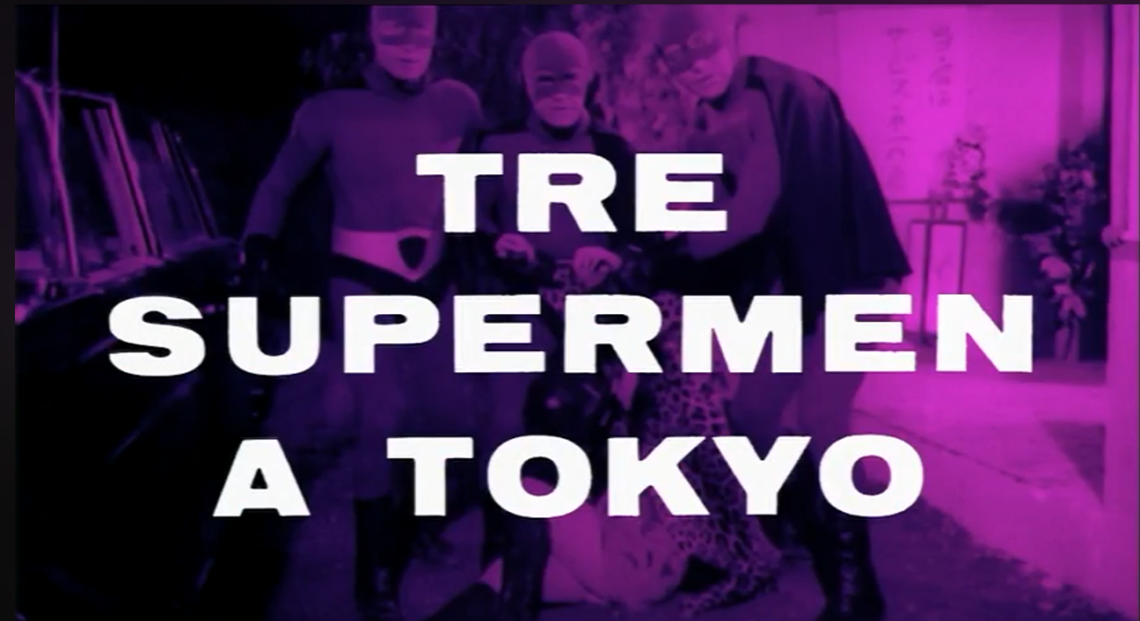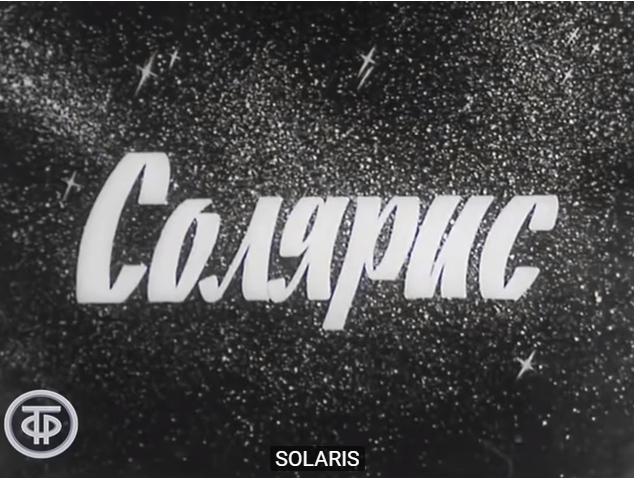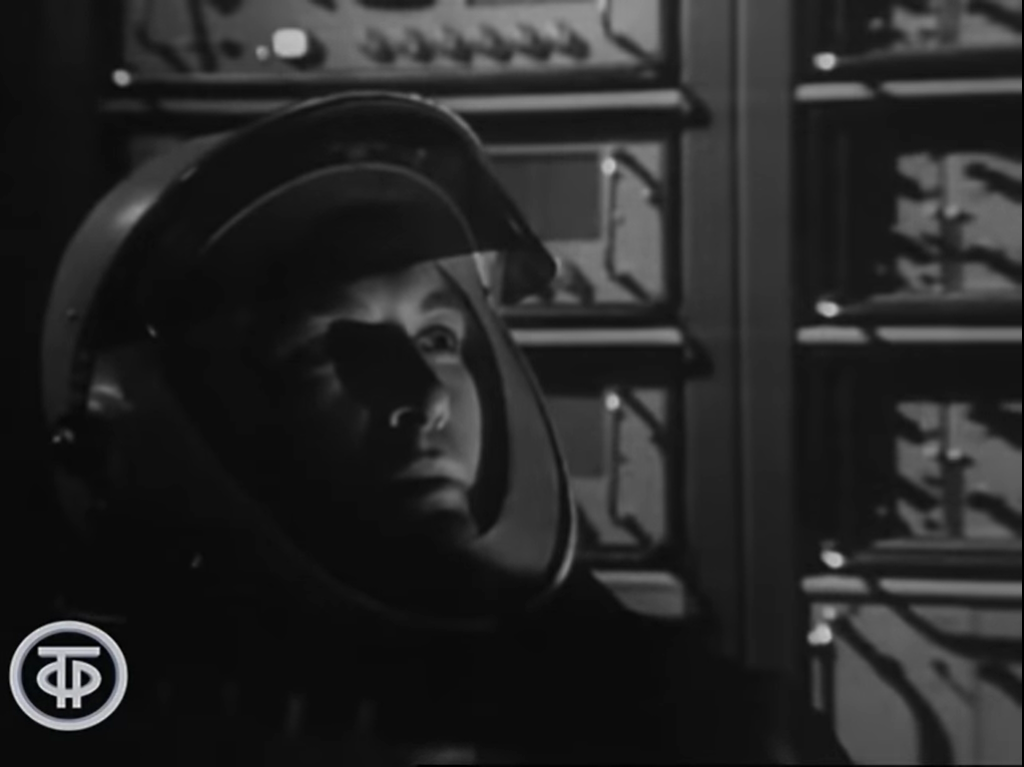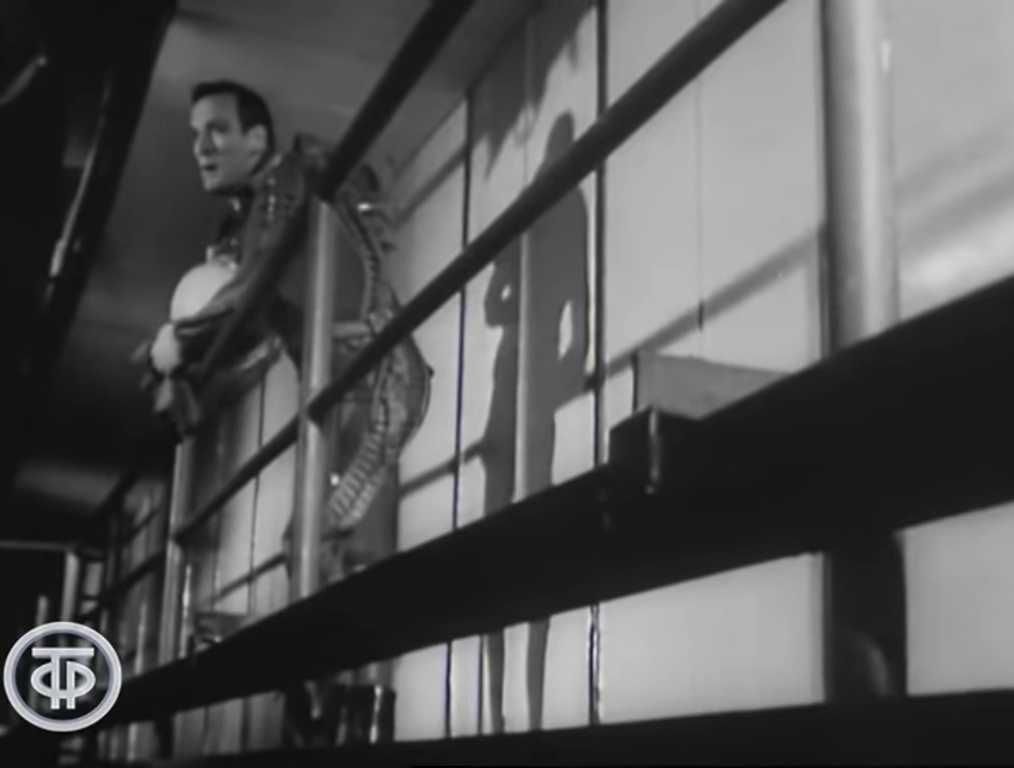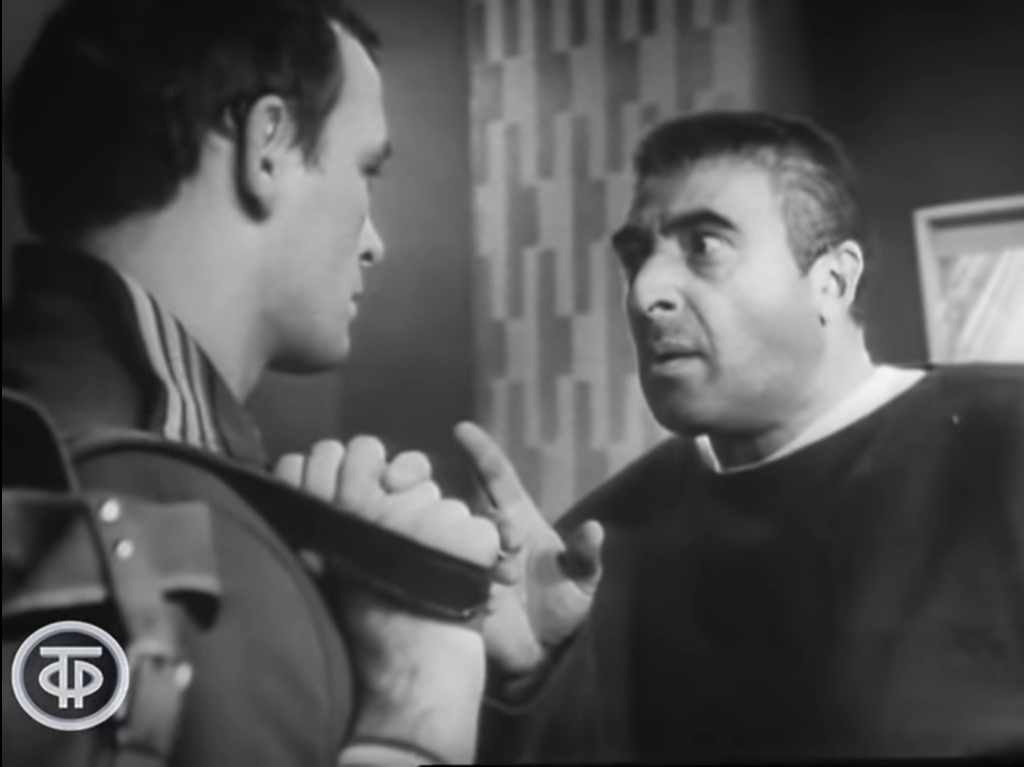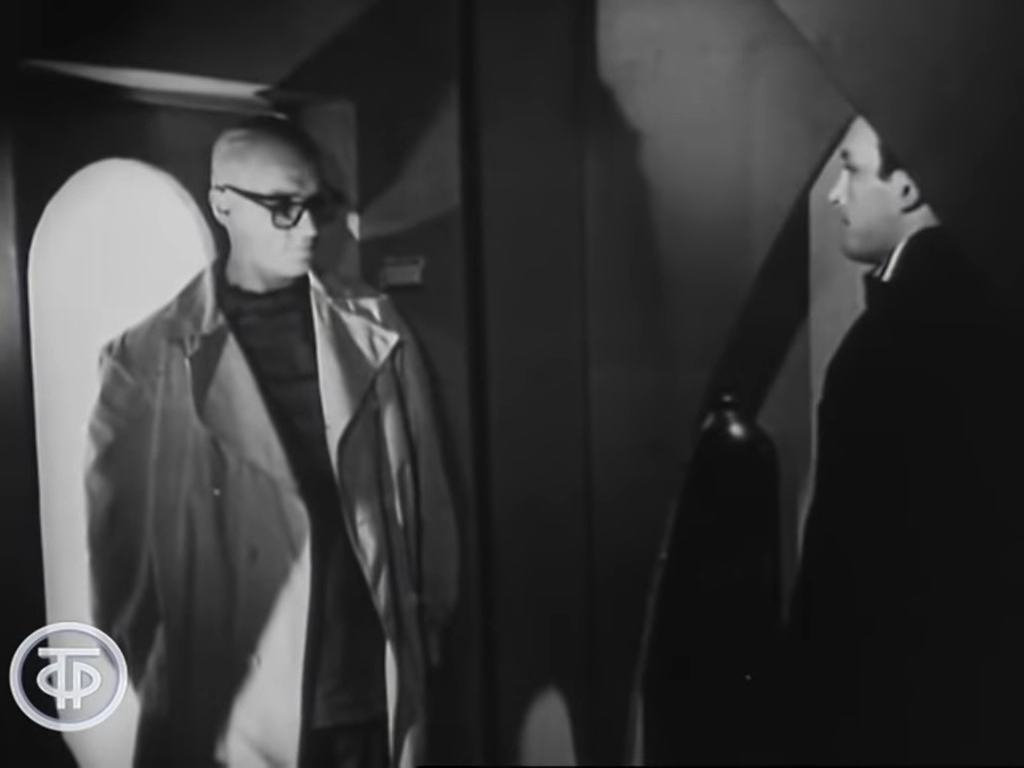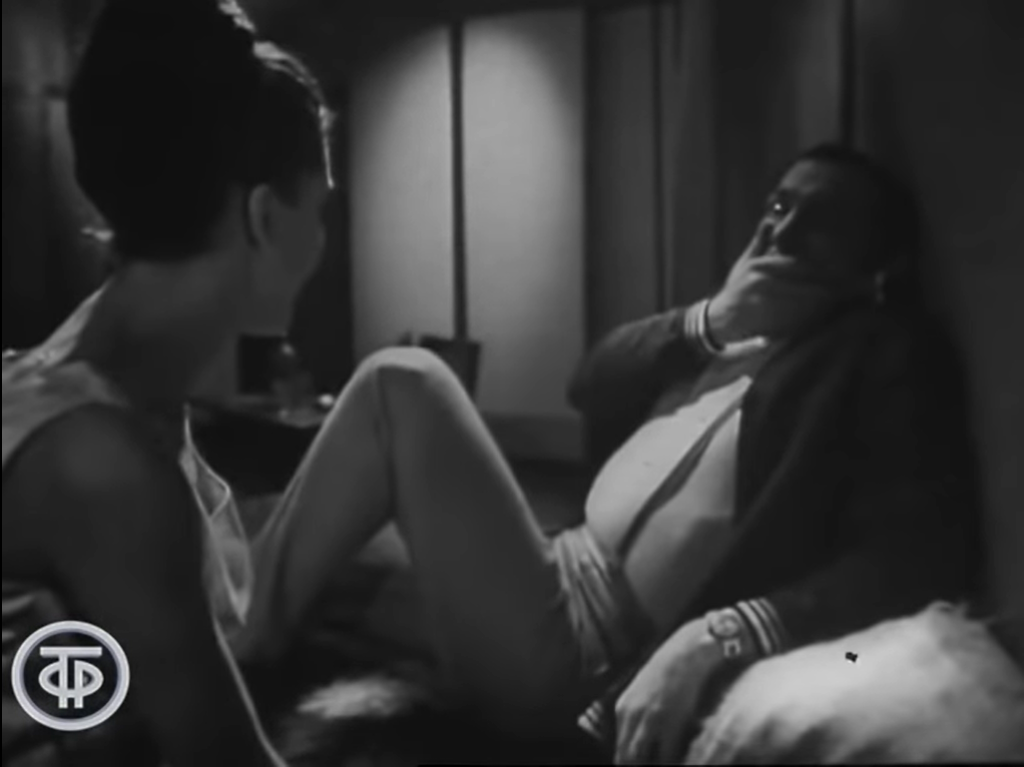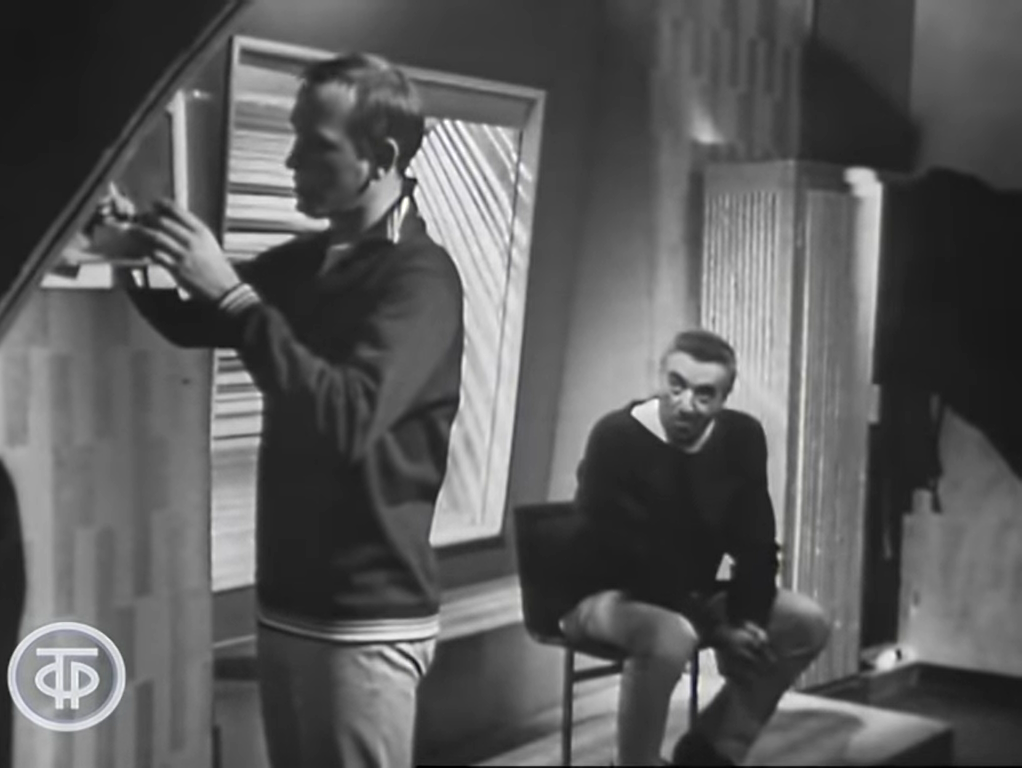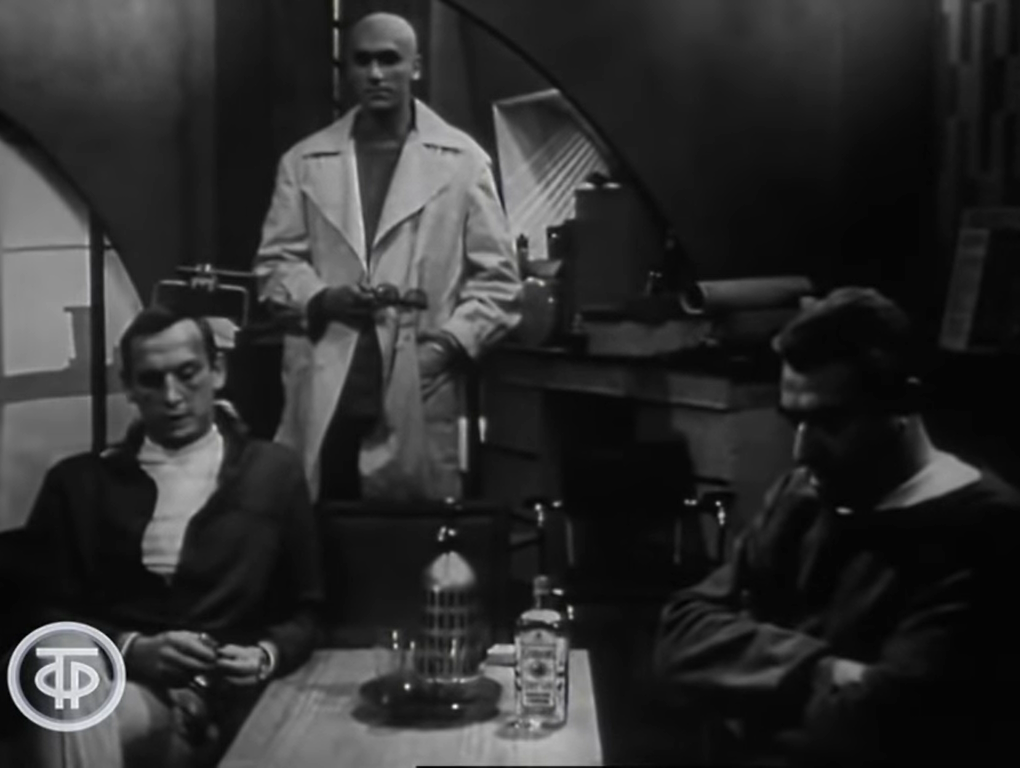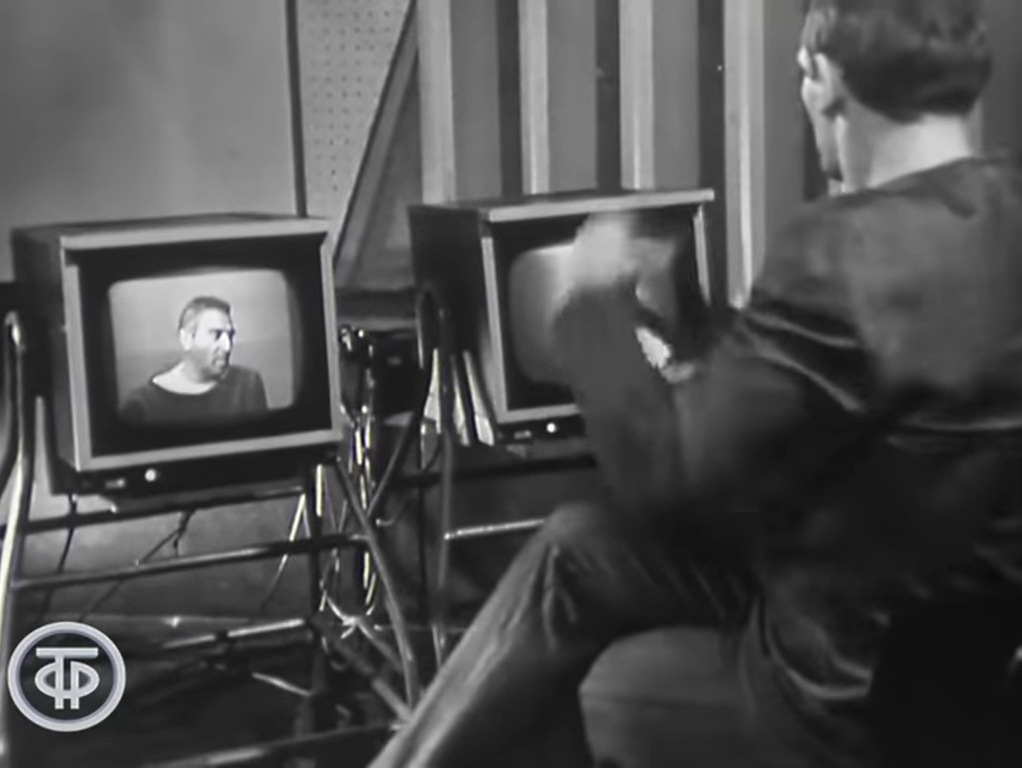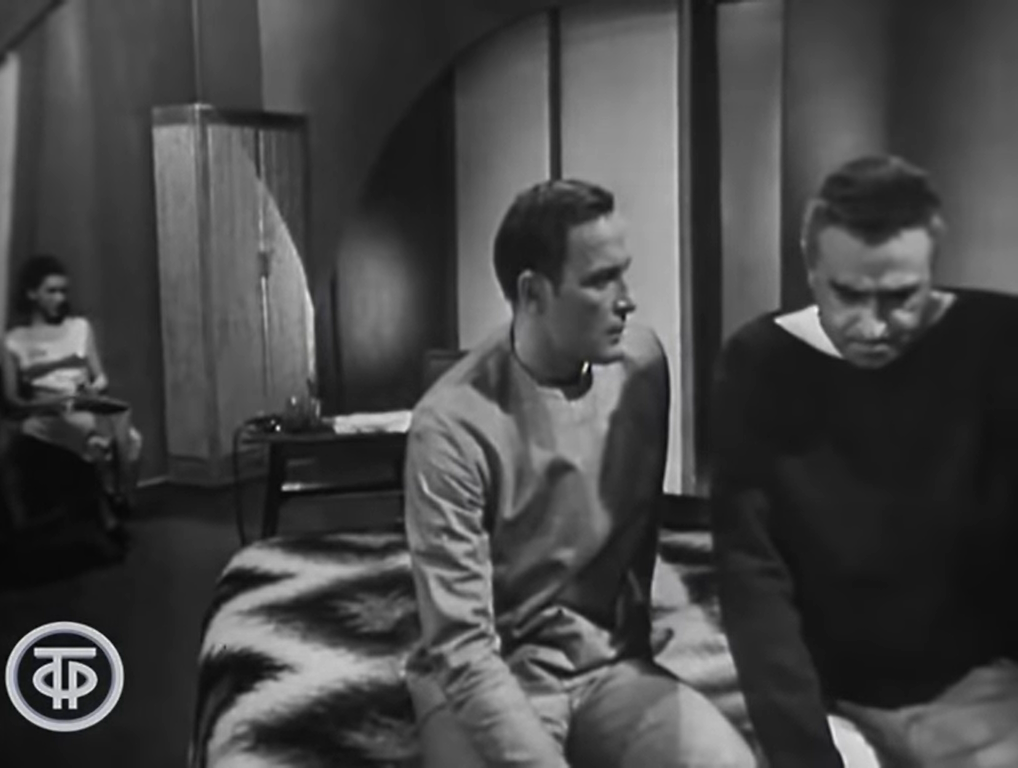-
#542 – Three Supermen in Tokyo (1968)
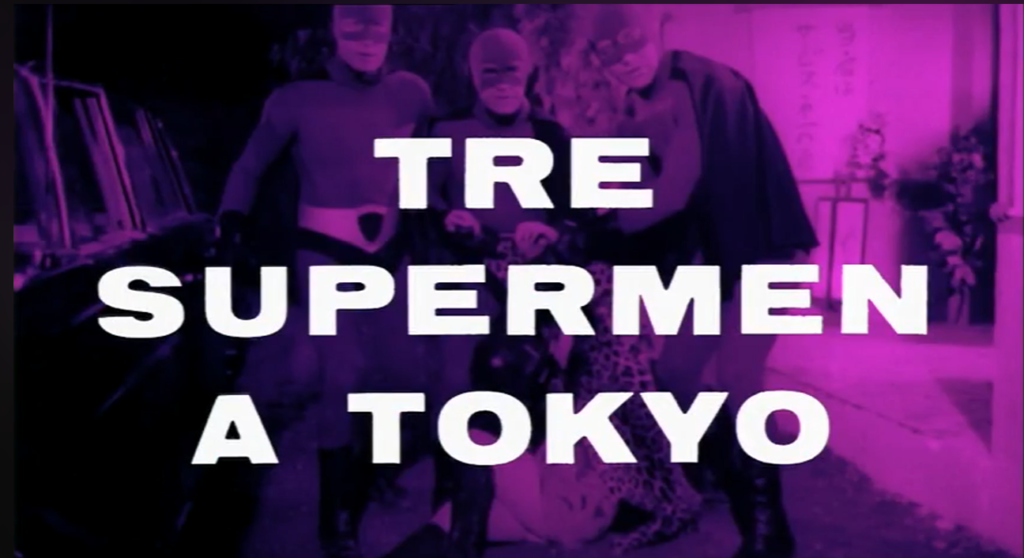
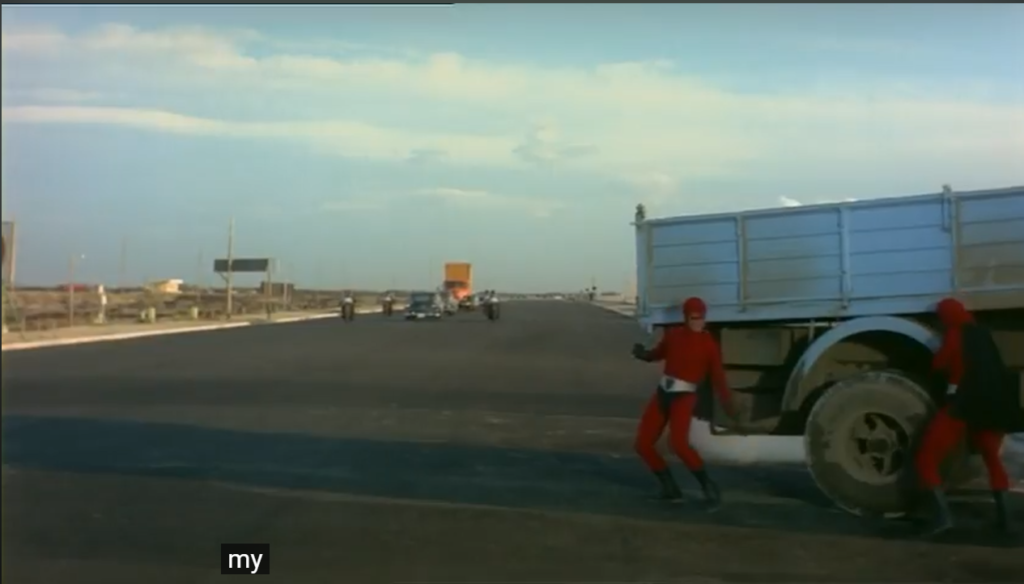
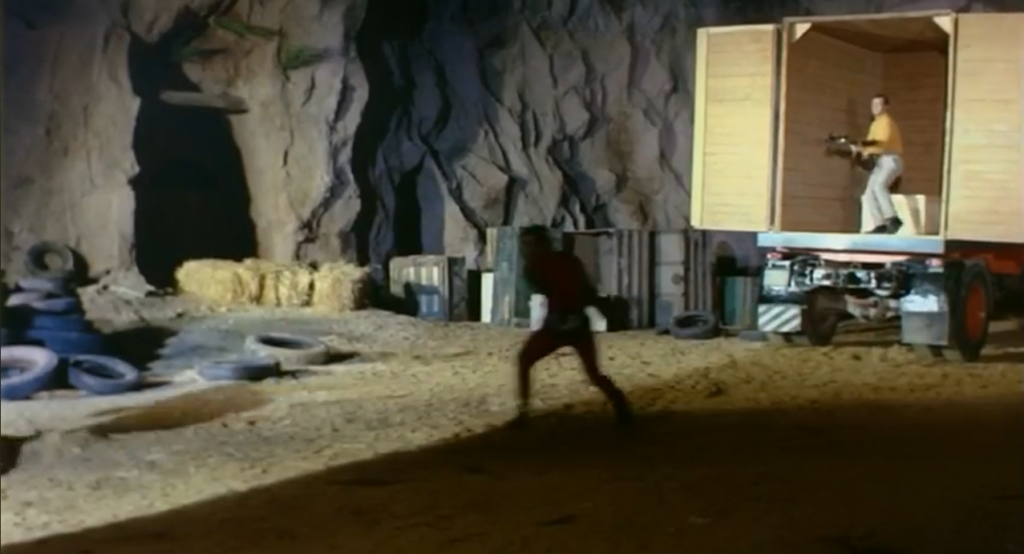
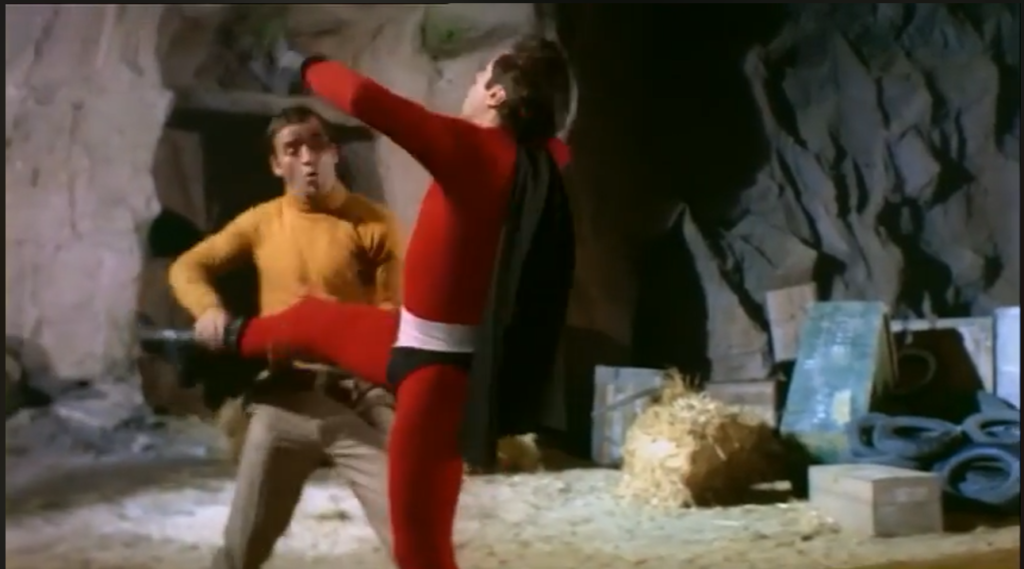
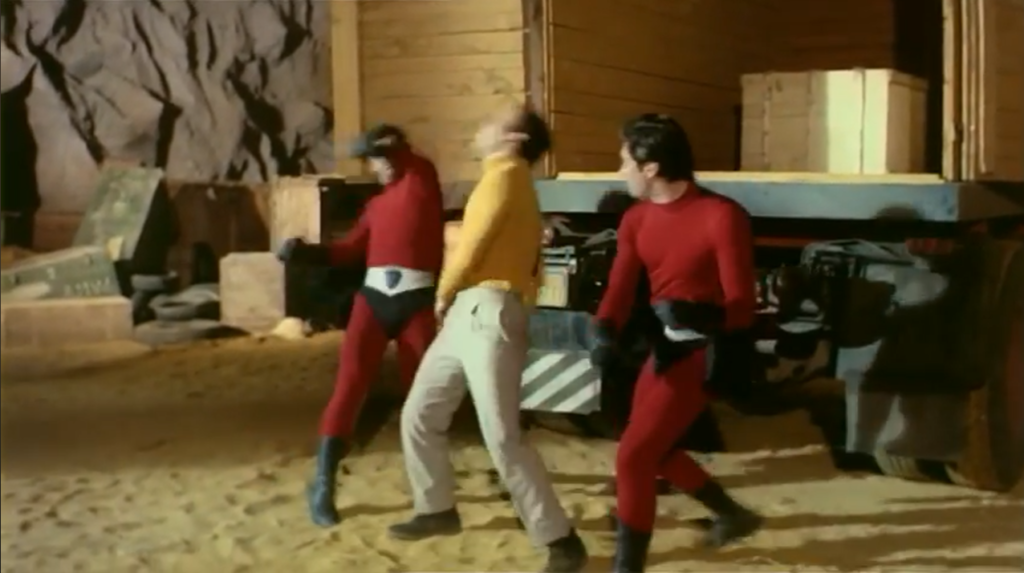
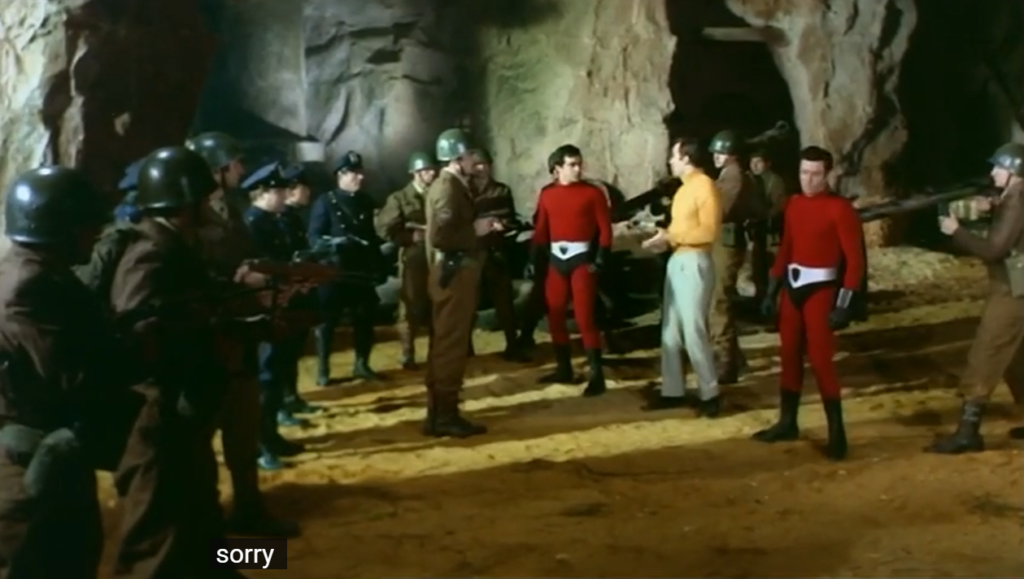
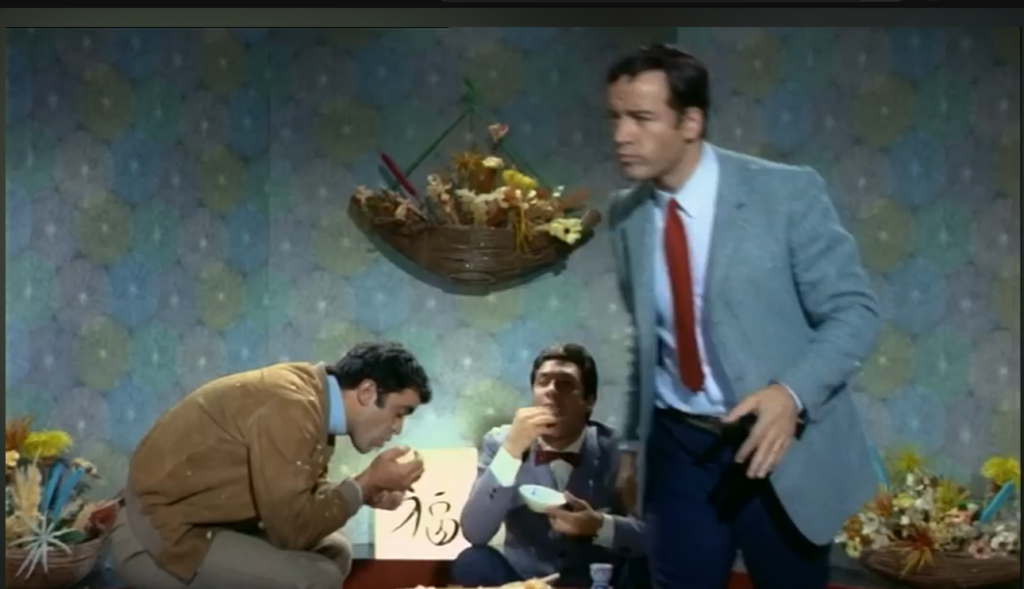
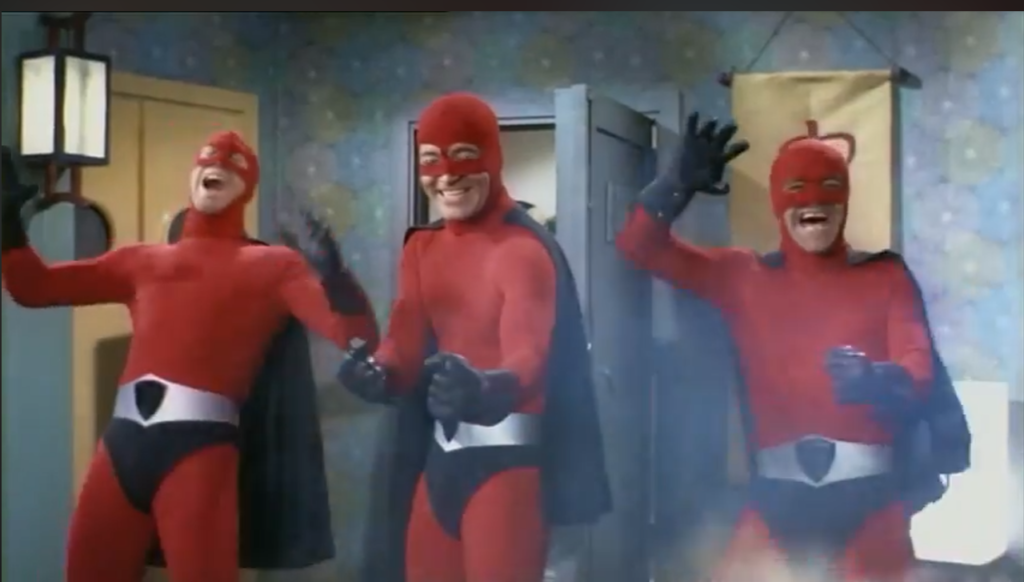
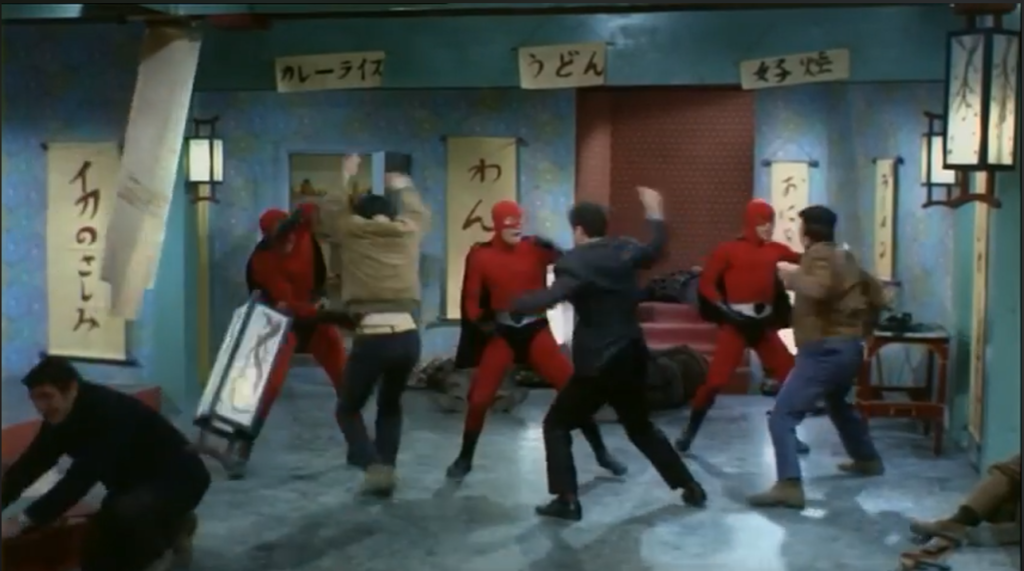
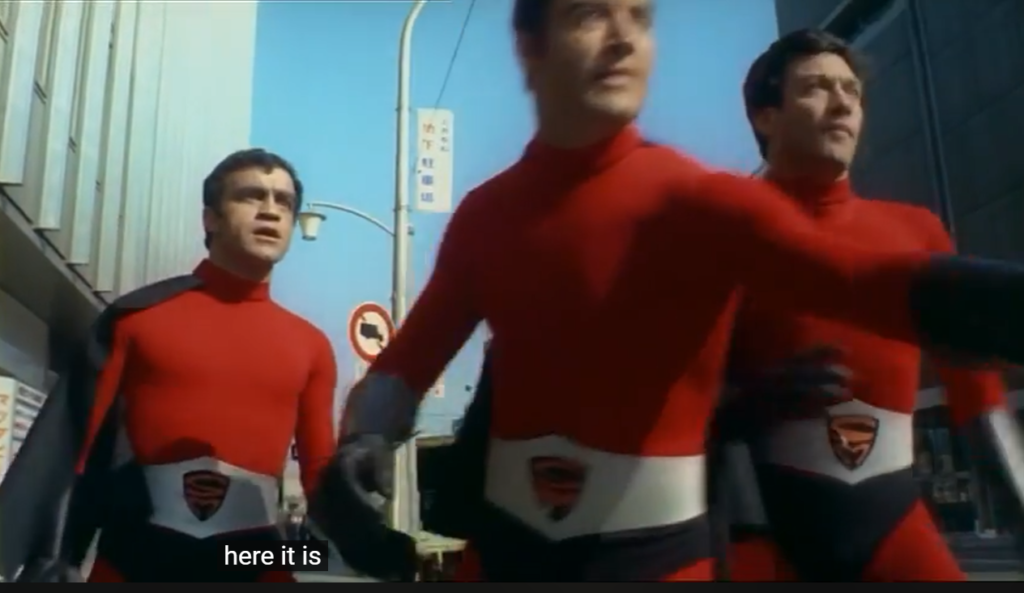
Three Supermen in Tokyo (1968)
Film review #542
Director: Bitto Albertini
SYNOPSIS: The pair of thieves known as “the supermen” are caught in a trap by law enforcement. However, they are offered a deal: their sentence will be commuted if they accept a mission to find a film of a spy and diplomat that, if revealed, will cause a huge political scandal. The two supermen are joined by Martin, a government agent, and the three head off to Hong Kong and eventually Tokyo to find the film and the spy…
THOUGHTS/ANALYSIS: Three Supermen in Tokyo is a 1968 film and the sequel to the 1967 film The Three Fantastic Supermen. The film opens up with the two international thieves who wear bulletproof suits known as “the supermen,” who are attempting to steal the statue of David, which is being transported for exhibition. unfortunately, the whole setup is a trap to lure the two thieves, and the government agent Martin manages to bring them in. The thieves are offered a deal: the criminal charges against them will be dropped, if they agree to undertake a mission on behalf of the government to retrieve a compromising film that a spy has in their possession, that they will show to the public in twenty eight days. The revelations of this footage will bring down the government, and might instigate world war three, so the stakes are pretty high. The two thieves are sent along with martin to Hong Kong and then Tokyo, where they believe the film and the spy who filmed it to be hidden. The film, like it’s predecessor, is a spy spoof/parody poking fun at films like the James Bond 007 series, and is situated in a big scene of Italian spoofs that were released around this time (and for a long while after). The story is fairly standard with no real surprises, but the emphasis is more on the entertainment and comedy than the plot. The humour itself has some decent moments, but not as gripping as the first film, which had a lot more outlandish elements to keep it interesting.
The main difference between this film and the first one is that none of the original actors return in the sequel, apart from one side character. The main issue with this is that the three main characters (the thieves) were professional acrobats, and could pull off some quite impressive stunts and choreography during the fights and action scenes. The replacement actors clearly do not have the same level of expertise, and the film loses one of it’s most unique aspects. The action scenes are still competent, but are lacking compared to its predecessor. Credit to the film should be given for actually shooting a good amount of the film on location in Tokyo. On the downside, there are instances when goons in the fighting scenes are clearly white people made to “look” Japanese with make up and such. Overall, Three Supermen in Tokyo doesn’t quite match up to the original film, and any unique elements that it had are done away with, leaving a more streamlined, average film that could easily get lost amongst the sheer volume of Italian films spoofing the spy genre.
-
#363 – Solaris (1968)
Solaris (1968)
Film review #363
Directors: Boris Nirenburg, Lidya Ishimbayeva
SYNOPSIS: Dr. Chris Kelvin has arrived on a space station orbiting the planet Solaris. When he arrives, he finds that his colleague is dead, and the two remaining crew are acting strange. Things get even stranger when his wife, who died ten years ago, seemingly appears on the station with no memory of what happened to her. He learns that people important to each of the crew appear to them, and this is somehow connected to the planet Solaris below them. Chris and the other crew must try to determine how these people have come to be on the station, and indeed if they are real…
THOUGHTS/ANALYSIS: Solaris is a 1968 TV film based on the novel of the same name. It is the first adaptation of the book, but the least well known, having been overshadowed by the 1972 Tarkovsky version, generally considered to be a masterpiece of cinema, and to a lesser extent the 2002 version, which saw widespread release. The film opens up with Chris Kelvin, an astronaut and scientist, docking his shuttle with the space station orbiting the planet Solaris. When he arrives, he finds a peculiar set of circumstances, with his old friend and colleague dead having apparently committed suicide, and the two remaining crewmembers being extremely vague as to what is happening on the station. The film’s plot unfolds slowly, with the mystery being slowly unravelled while new complications are constantly added. It is rather similar to the other two films versions, so I will assume it follows the plot of the novel with some accuracy. It’s slow-paced, but it fits the story well, since it gives the viewer space to reflect on the themes that the film is exploring.
Upon finding his wife, who died ten years ago, seemingly alive and well on the station, he realises that each crewmember has had someone personal appear to them. They suspect it has something to do with Solaris attempting to communicate with them, and somehow reaching into each of their subconscious’ and materialising a person within. This is one of the primary themes of the film, and the means of communicating with an entity or being that is completely unlike anything that could be encountered on Earth. It is explained decently, and explored primarily through Chris’ relationship with Harrie, or the facsimile that has been created, which leads to the distinction between the real and fake being increasingly blurred. It doesn’t have the style and depth of the Tarkovsky version, but this no-frills version still gets its message across. A lot of the film does focus on Chris and Harrie, and it seems like a lot of the science-fiction emphasis is sidelined in favour of the film being more of a drama. We never get to see the people ‘created’ for the other crewmembers or get any clue to who they are, so that leaves an odd mystery that will never be solved (in this version anyway). This further reinforces the main relationship between Chris and Harrie, again emphasising their drama more than the larger concepts of the film.
Even though this version doesn’t have the budget or vision of the Tarkovsky version, it still gets the story across well. Instead of elaborate sets and design, we see a rather sparse looking space station which instead emphasises a feeling of isolation, and gives the film a more horror-vibe at times. This is not a bad adaptation by any means: it delivers the story well, explains what’s going on clearly most of the time (there are some points, particularly near the end, that it gets a bit confusing), and explores its themes with a decent depth. However, given the 1972 Tarkovsky version is such a stellar adaptation and work of cinema, there is really not much value in watching this version, as everything in it is done so much better there. Overall, a decent adaptation, but completely eclipsed by its successor.
-
#32 – Barbarella (1968)
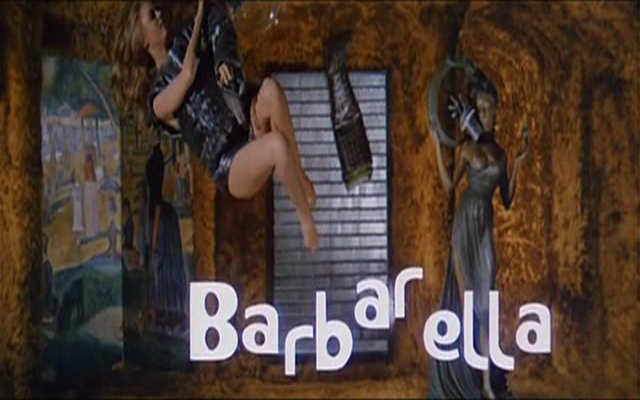
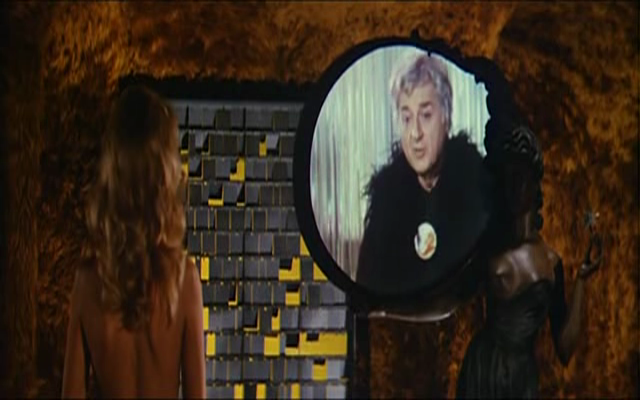
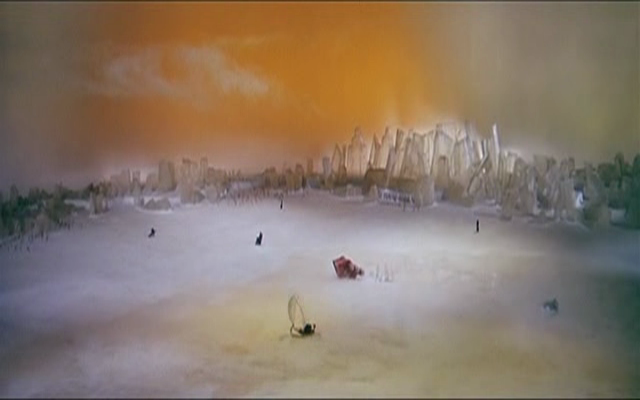
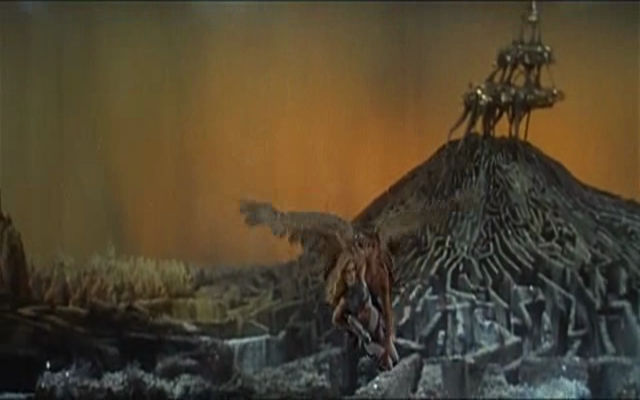
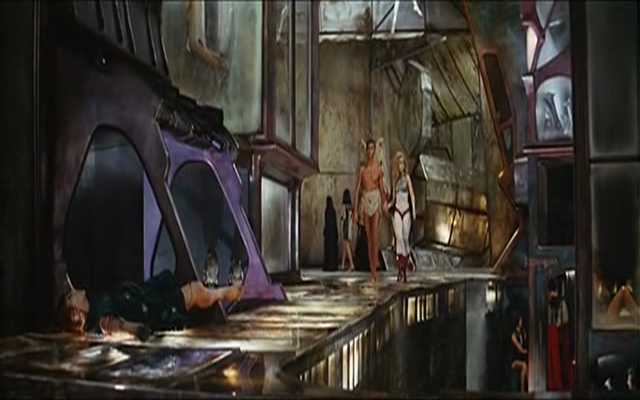
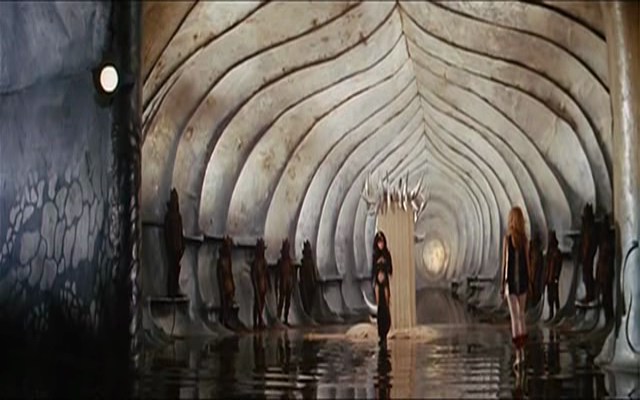
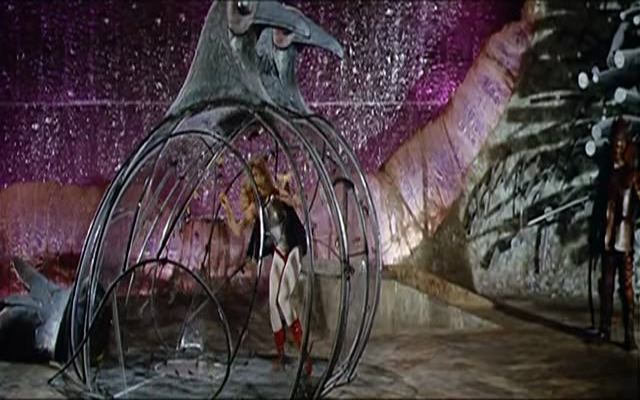
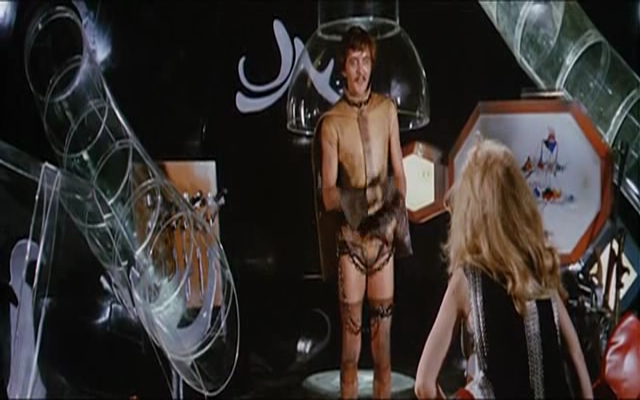
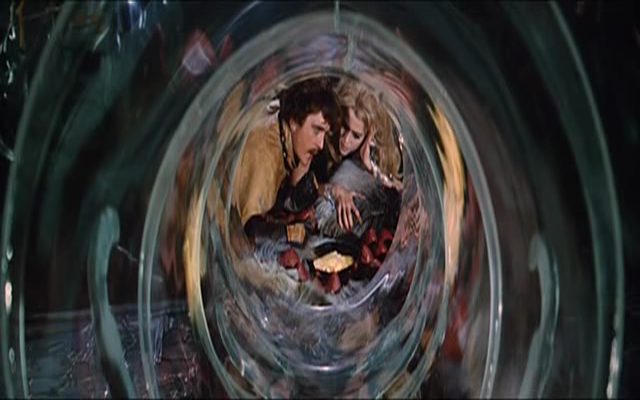
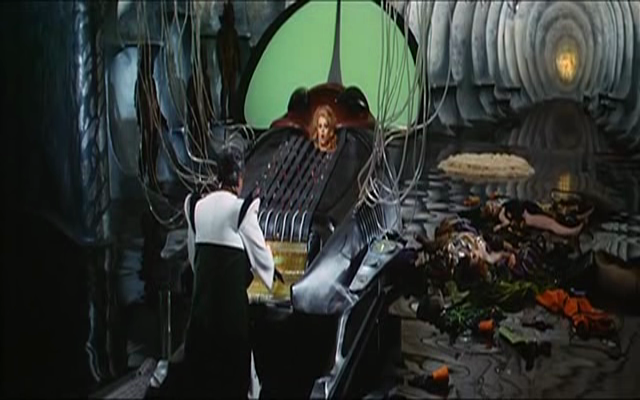
Barbarella (1968)
Film review #32
Director: Roger Vadim
1960’s science-fiction based on the comic strip of the same name…
SYNOPSIS: Barbarella is contacted on her ship by the president of the Republic of Earth for a top secret mission. She is to retrieve Doctor Durand Durand from the planet Tau Ceti, where he was last seen. Durand has invented a positronic ray, and disappeared in an unknown sector of space. As Earth has been at peace for centuries, weapons are unheard of, and if the positronic ray falls into the wrong hands, it could spell disaster for Earth. As she is on course for the planet though, her ship malfunctions and she crashes on the surface of Tau Ceti…
Barbarella heads out onto the surface, and meets twin girls, who knocker her unconscious and drag her away. When she awakens, she is surrounded by a number of children, who have tied her up and use dolls with razor sharp teeth to bite her. Fortunately, Barbarella is rescued by A huntsman, Mark Hand, who is on the lookout for errant children. She offers to reward him, and he suggests they make love. She is surprised he wants to do it physically, as people of Earth now use pills and psychological analysis instead. She however agrees, and departs from Tau Ceti in her ship, agreeing that sometimes the old ways are the best…
Her ship crashes through the surface of the planet into a labyrinth, badly damaging her ship. She exits her ship and is knocked out by a rock slide, but is rescued by an angel named Pygar. He explains that the labyrinth is where all the people who are cast out of Sogo, the city of night, are forced to live. She is then introduced to Professor Ping, who offers to repair her ship, and suggests she heads for Sogo if she is looking for Durand. Pygar, using his wings gives Barbarella a lift to Sogo. Battling the Great Tyrants black guards along the way, they finally arrive. The two are briefly separated when Barbarella is assaulted by two of the residents. She is saved however, by a one-eyed woman, and Barbarella heads off to search for Pygar.
She finds him and the two try to escape, but find themselves trapped in a strange chamber with an odd liquid beneath the floor. The Concierge, who serves the Great Tyrant who rules Sogo, steps in and takes them away, explaining that the liquid is Mathmos, a demon of sorts that feeds on the negative energy of the people of the city. The two meet the Great Tyrant, who is none other than the woman who rescued Barbarella earlier. Pygar is left to be “crucified” by the Tyrant, and Barbarella is sent to be pecked to death by birds. She is rescued by Dildano, the leader of the resistance, who want to overthrow the tyrant. She offers to thank him by making love, but this time he wants to experience the use of the pill like on Earth. The clumsy Dildano explains that the only time the tyrant is vulnerable is when she is asleep in the Chamber of Dreams, and hands her the invisible key to her lair and sends her on her way.
Barbarella is soon captured by the Concierge again, who traps her in a “pleasure machine”, which will cause her to die by overexposure to pleasure. Barbarella however, being too full of good and pure energy, breaks the machine, and finds out that the Concierge is none other than Durand, who looks a lot older than she was told because of the effects of the Mathmos. He traps Barbarella in the Chamber of Dreams with the Tyrant, so he can proclaim himself ruler of Sogo. His plan is interrupted by Dildano, whose revolutionary forces start to attack, he decides to take them out using his positronic ray. The Tyrant however, releases the Mathmos to destroy Durand and Sogo. She and Barbarella manage to escape by being protected in a focefield apparently generated by Barbarella’s goodness. The two find Pygar and they all fly back towards Barbarella’s ship together.
THOUGHTS/ANALYSIS: This is an odd sort of film. It seems to be somewhat of a parody of science-fiction, with everything being very tongue-in-cheek. It is a very 60’s film; the psychedelic images of the Mathmos throughout the movie, the scene with the not-so-subtle smoking scene of some sort of drug, the use of “love” in direct reference to how “Peace” was used at the time, and also the soundtrack, which sounds very much like a soundtrack you would find in a more “reality-based” movie of the sixties, or in one of the clubs of the time, quite a difference from the spacey soundtracks one is used to…
Perhaps what makes this movie stand out is the use of a female lead role; something you very rarely see in science-fiction, and almost completely unheard of back then. The erotic and suggestive undertones of the movie really need the use of that innocent, good-natured Barbarella though, and had this been a more serious or traditional science-fiction movie, I’m guessing this would have never have even been given approval to be made. There’s plenty of phallic imagery throughout the film too, so you’re never really taking this film too seriously, as it always one step away from being a complete parody of what itself.
Barbarella was a box office and critical failure, not being released in English until nine years after it was released in France and Italy (The film was filmed in France, and the film was filmed in both languages.). Despite this though, I think it is one of the more memorable science-fiction films of that era, as it does something that is very different. It does not really try to overcome the cheap design and props either, it in fact seems to revel in it. To testify to this, it has a small cult following, and a remake has been talked about it on and off for years. I imagine it would be quite difficult to capture the essence of the original movie, as the decade it was produced in provided a very strong context in which this movie could thrive.
Overall, Barbarella isn’t your typical science-fiction from that era, it is something a little different that never takes itself too seriously. It is important to consider the era it was made, as it plays off many of the definitive aspects of the sixties to appeal to that audience. It’s a little “off the radar” in terms of mainstream science-fiction, but this is why it becomes quite a good parody of the more commercial ones, and having a woman in the lead role in this context is quite subversive and risky, really rounding off this very unique film.
